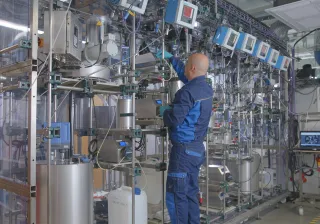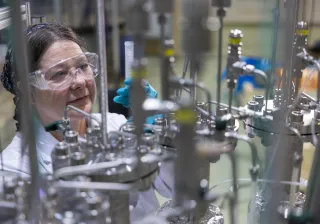As demand for electric cars and renewable energy grows, concerns are emerging about the availability and price development of metals that are critical to industry. More extensive recycling of metals will be needed in addition to mines in the future. In line with the concept of 'urban mining', electronic scrap stored in households will become increasingly important as a source of critical metal materials.
The use of electric vehicles is growing, increasing the need for critical metals in electric motors and batteries. The number of fully electric cars has almost tripled over the last few years in Finland alone. This is also reflected in the rapid emergence of public electric-vehicle charging points.
Among other materials, electric cars need more lithium, cobalt, nickel and copper than ordinary cars with internal-combustion engine.
– On the basis of current technologies, the exponential growth of electric vehicles will inevitably lead to a shortage of many metals and alloys. We will also have to build new infrastructure, such as power grids, which will further increase demand for metals. In future, we must give thought to rational applications for metals that are critical to industry and, on the other hand, whether alternatives can be found for them in the battery industry, says Pekka Pohjanne, Research Manager at VTT.
Is cobalt cornerstone in the battery production?
Cobalt is a key raw material in the manufacture of lithium batteries; the need for it will continue to grow as electric cars become more common.
– Future battery solutions are being explored at the moment – might these reduce, or in some cases eliminate, the use of cobalt? wonders Pohjanne.
Pohjanne points out that alternative battery solutions already exist. On the other hand, in the case of second-generation battery solutions, product development has succeeded in reducing the use of critical metals to a fraction of those used by earlier battery types.
– The proportion of cobalt in lithium batteries has already been reduced from a third to a fifth compared to current battery technologies. Cobalt now only accounts for around 10 percent in some of the latest battery concepts, comments Pohjanne.
Will a silver shortage emerge as solar energy becomes more common?
Although, since they are renewable, solar and wind energy are in themselves zero-emission, the construction of the related systems is not free of environmental impacts. Solar energy technologies require a range of metals – including silver, telluride, indium and gallium – which may cause problems in the future.
– We need to find raw material substitutes for critical metals and step up the recycling of metals. At the same time, new technological solutions must be developed which require lower quantities of critical raw materials.
Pohjanne points out that a number of alternative, secondary sources of metal raw materials have already emerged alongside traditional mines.
– For example, large quantities of metal raw materials could be harvested from industrial side-streams. On the other hand, homes have a lot of electronics with plenty of valuable materials. These must be made available for industry in a much more efficient manner than now. New mines will also be needed.
New production technologies will also help to reduce the consumption of raw materials. A good example of this is Additive Manufacturing or AM i.e. 3D printing. VTT and Nurmi Cylinders have jointly developed a 3D-printed hydraulic valve block which is 66 percent lighter than the original part and needs less raw material.
* Around 1,300 recharging points can now be found around Finland. Schneider Electric.
New innovations on the basis of R&D funding
Pohjanne explains that Finland could benefit from the global scarcity in natural resources, relative to demand, by investing in the development of new technologies and services for boosting the circular economy and material efficiency. Because many hidden metal reserves remain, there is a need for new innovations.
– Finland is a technology-intensive country with a high degree of expertise, a good educational base and a working model for cooperation between various industries and businesses. This provides good opportunities for the development of innovations that enhance metal recycling.
– It is a strong basis on which to meet the future and think about what it offers to different actors.
Pohjanne believes that Finland has the advantage of recent growth in research funding.
– The public sector is encouraging the development of new innovations. Research funding is once again a focus area after its decline during the last recession.
* Around 1,300 recharging points can now be found around Finland. Schneider Electric.





